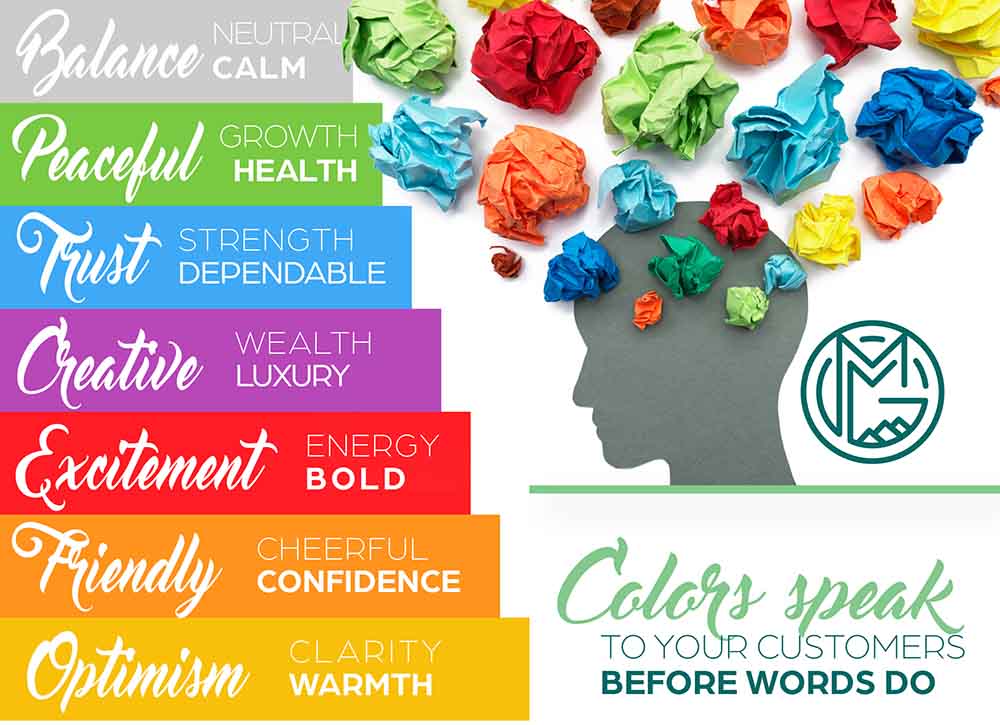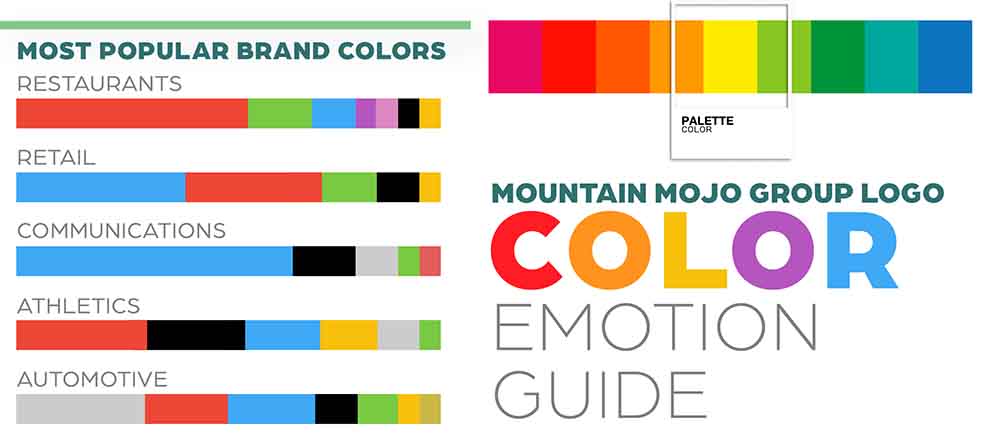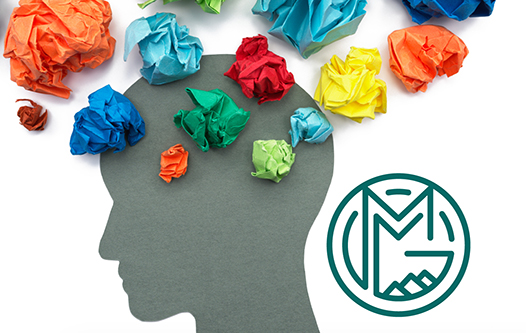Colors are used all over in marketing. From logos and websites to banners and business cards, color is everywhere. Sure, everyone knows that colors add a visual splash, but did you know that color has a much more significant impact on marketing than just being something to look at? Color is one of the most essential considerations business owners should make when it comes to branding.
Color is often the first impression your branding will have on potential customers. Color catches the eye and is registered by the viewer’s brain before shapes and words. This phenomenon and other effects of color have caused researchers to study color psychology. Business owners can leverage color psychology to create a favorable emotional response and connection from potential customers.
What Is Color Psychology?
Color Psychology studies the effects of color on human psychology, behavior, and emotion. Anyone who has taken an art class is probably familiar with things like the color wheel and the relationship between colors, but they don’t often stop and think about how different colors affect us differently. Color Psychology looks at how color can elicit different emotions, moods, and reactions from viewers.
How Color Affects Your Brain
We are still learning more about how color affects people, and although how people perceive color can be subjective, some color effects appear to have a universal meaning. Have you ever felt yourself become relaxed in a blue room? This is a common example of how color can affect people’s moods. Blue and other cool colors are often associated with calm, serenity, and peace, which causes people to feel more relaxed compared to when warmer colors like red surround them. Warm colors are often described as energetic, exciting, and even aggressive.
The Different Ways Color Psychology Is Applied
Color Psychology is still being studied, and new or different applications will continue to be discovered as time goes on. Ancient cultures would use color in therapy, and some practices continue to integrate color therapy today. However, color psychology has recently gained a lot of attention in consumerism and marketing.
How Does Color Psychology Apply To Marketing?
Once you understand the effects of color psychology, you can probably start to see how you can apply this knowledge in your business or marketing endeavors. Leveraging colors to elicit emotions in consumers is a powerful way to establish a connection between them and your business or product. For example, high-energy colors like red and yellow are often found in fast-food restaurants’ decor, advertising, and logos to give off the feeling of speed and energy.
Considering the effects of color is essential for any business looking to build its brand’s identity and establish meaningful connections with its customers. Marketers and business owners should consider how the colors they use in branding and advertising either support or harm their intended tone, emotion, and purpose.

What Does Each Color Represent?
Now that you know how colors are important in marketing, it is vital to know the corresponding traits and the shared emotions associated with common colors.
- Red– Red is the warmest color and often implies excitement, speed, strength, energy, passion, and love. Red is bold and is often used to catch people’s attention.
- Orange– Orange is often associated with cheerfulness, confidence, and success. It is also used as an attention grabber and is considered bright, happy, and uplifting.
- Black– Black is a very versatile color that can be used to create a variety of emotions. Black is often associated with luxury, boldness, power, and mystery; however, it can also be seen as unhappy and dramatic.
- White– White, similar to black, is another versatile color. White is often associated with feelings of purity, innocence, and cleanliness. White can also create feelings of emptiness and is often used to create space in designs.
- Blue– Blue is the furthest color on the cool end of the spectrum, opposite of red. Blue commonly represents feelings of trust, peace, dependability, calm, and orderliness. Blue is often associated with authority and is a common color used in industries trying to be considered trustworthy.
- Green– Green is also considered a cool color and commonly signifies things like nature, growth, health, peace, and luck. Green can help create a sense of peace and put people at ease in new or public places.

The Most Popular Brand Colors
Because common colors generate certain feelings and emotions and specific industries look to capitalize on these emotions as a part of their brand identity, it is common for businesses in the same industry to overlap and use similar color schemes in their branding and advertising. Here is a breakdown of some of the most popular brand colors by industry.
- Restaurants – The most common color scheme in restaurants involves using warm colors. Red is the most commonly used color in restaurants, especially in fast-food chains and other restaurants whose focus is quick service and high turnaround. Red is an energetic color and implies speediness. Other warm colors like orange and yellow are also standard. Although red is the most common, cool colors like green, blue, and purple are also used by restaurants, especially those that want to promote a comfortable and relaxed atmosphere. Cool colors encourage people to stay longer and relax more.
- Retail – The most common color used in retail is blue, followed closely by red. Much like restaurants, the decision between a cool color like blue and a warm color like red often comes down to the desired purpose of the store.
- Communications – The most popular color used in the communication industry is blue. Businesses in this industry spend a lot of effort to build a sense of trust, authority, and truthfulness, and blue is the color that best represents those emotions.
- Athletics – Colors used throughout the athletic industry are pretty diverse. Red, black, blue, and yellow are common colors used in team branding.
- Automotive – The automotive industry is another industry that makes use of a variety of colors. The type of vehicle being manufactured considerably impacts the colors used. Red is common for sports cars due to its association with energy and speed, black is often used for luxury vehicles, and blue and grey are common in more sensible vehicles that want to reinforce the idea of trustworthiness.
How Do I Choose The Right Color For My Brand?
As you may have started to guess, finding the right color for your business’s brand is very important, but it can be difficult to make. There are many colors, all different shades, with different meanings, emotions, and feelings associated with them. Choosing one or two or even three can be overwhelming and paralyzing. Keep in mind all the different mediums your branding will be represented on, like logos, websites, graphics, books, business cards, building colors, lights, and more. When you combine all of these variables, it can often feel borderline impossible.
Luckily, there are some tricks to help you start narrowing down the right color for your brand. First, it is essential to look at the big picture of your brand.
1. What is your mission?
2. Who is your target audience?
3. What adjective would you use to describe your business?
These questions are an excellent way to narrow down colors that will help reinforce these ideas. If your brand’s mission is to provide fast service and you use adjectives like “efficient,” “energetic,” and “fast” to describe it, then it is a good shot that a warm color like red would fit!
Understanding the direction you want to take your brand and establishing specific emotions you would like to target is the best way to start narrowing down which color is right for you.
Let’s Get Started!
Trying to come up with the right color for your brand is often a thoughtful and considerate exercise that can take a great deal of time, and even after you’ve done it– without any experience or understanding of color psychology– it can still be really difficult to make the right choice. It is a vital decision that should not be taken lightly, so it is always a good idea to reach out to experienced professionals for help!
If you want to take full advantage of color psychology throughout your branding but don’t know how or where to start, we would love to be a resource for you and your brand! Here at Mojo, we have experience in all different areas and aspects of branding projects. From logos, websites, graphic design, and anything else you can think of!
If you are interested in realizing the advantages of successfully leveraging color psychology in your branding, contact us today! We would love to discuss how we can help your business reach its full potential!

Michelle has been with Mountain Mojo Group as Content Creator and Lead Social Media Manager since early 2020. Throughout her time here, she has led efforts in graphic design, social media, content writing, and branding strategies for our clients.

